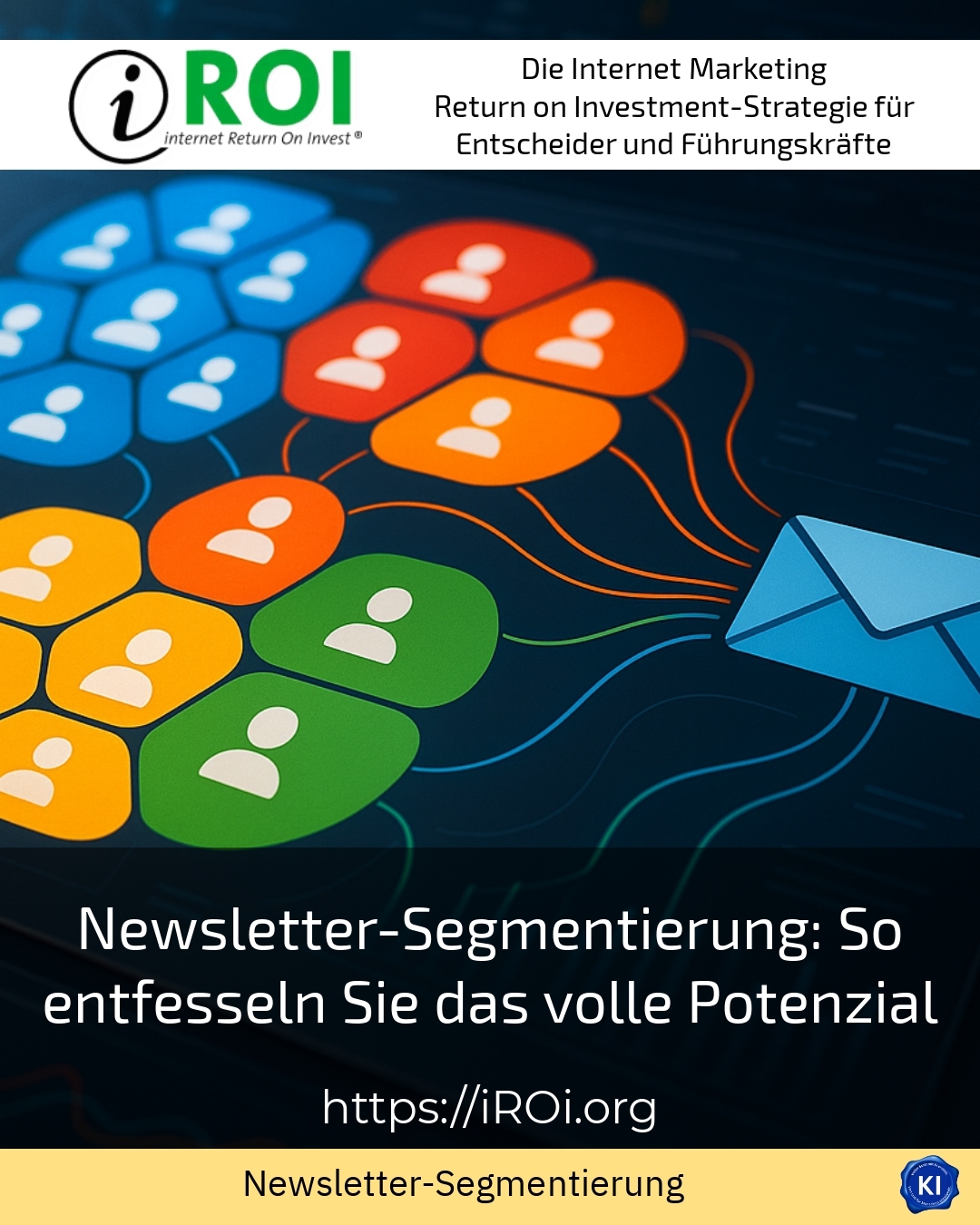Newsletter segmentation** is a decisive factor in making email marketing more efficient and personalised at the same time. A targeted division of the recipient list into different groups helps to tailor content precisely to the interests and needs of subscribers. This allows the full potential of newsletters to be unleashed and significantly increases the success of customer contact.
Why newsletter segmentation makes sense
Mass newsletters often miss important opportunities, as many recipients tend to feel disturbed by irrelevant content. With structured segmentation, newsletters can be tailored to the respective target groups. This results in higher open rates, more clicks and stronger customer loyalty.
In practice, this can be seen, for example, in online shops that segment their customers according to their purchasing behaviour. Customers who frequently buy sporting goods receive special offers for new collections, while others prefer to receive information on outdoor equipment. A cosmetics brand, on the other hand, could send newsletters for different skin types.
The frequency of mailings can also be optimally controlled with segmentation. Some people only want monthly updates, while others want to be informed weekly or even daily. This way, each recipient feels individually advised.
Practical examples of successful segmentation
A publishing house divides its subscribers according to interests, for example: Culture, politics or business. This allows the respective newsletter team to deliver customised content and increases the relevance for each reader group.
BEST PRACTICE with one customer (name hidden due to NDA contract) The client segmented its recipient list according to reading behaviour and topic preferences. Thanks to this differentiated support, the opening rates increased by over 25 % within three months and the unsubscribe rate fell noticeably.
A furniture store uses segmentation based on location and preferred style. For buyers in urban areas, modern, space-saving furniture adverts are sent out. Target groups favoured in rural regions receive rustic or classic living ideas.
The education sector can also benefit from this: Educational institutions send newsletters segmented by subject or graduation phase - so students only receive information on exams, career opportunities or events that are relevant to them.
Newsletter segmentation: criteria and methods
The most important criteria for newsletter segmentation are
- Demographics: Age, gender, place of residence or occupation help to make content more targeted.
- Interests: Subscribers select topics that are important to them.
- Behaviour: Click and purchase history provide information about individual preferences.
- Engagement: Activity levels such as opening or click rates allow dynamic customisation.
- Communication preferences: Frequency and preferred formats of mailings.
A combination of these criteria enables particularly fine and efficient segmentation. This allows you to address users in a more targeted manner and avoid the wastage associated with general mailings.
Segmentation as the key to personalisation
Targeted addressing through segmentation also creates the basis for successful personalisation. Simply including the first name in the subject line can significantly increase the open rate. A sporting goods manufacturer also found that product offers customised to the preferred sport generated significantly more clicks than generic newsletters.
Another option is the dynamic design of the newsletter layout: travel fans, for example, receive different images and content than those interested in technology. This customisation leads to a better user experience and strengthens loyalty to the company.
Advantages of newsletter segmentation for companies
Structured segmentation offers more than just increased performance. It helps companies to reduce their communication costs as there is less wastage. Instead of sending to everyone indiscriminately, you only reach the recipients who are interested.
In practice, this means that an online shop, for example, could reduce the number of newsletters sent through segmentation, but at the same time increase sales in the segment. This noticeably increases the return on investment.
Segmentation also improves customer understanding in the long term, as it provides data that is valuable for marketing and product decisions. A bank uses segmentation, for example, to specifically address different target groups for loans, investment products or insurance.
Individualisation through segmented approach with iROI coaching
At iROI-Coaching, we provide you with targeted support and expertise for your newsletter segmentation projects. This results in customised concepts that tailor your email communication precisely to the most diverse target groups.
Our experience from various industries shows time and again that customised segmentation strategies lead to higher opening and click rates and strengthen customer loyalty in the long term. We emphasise an easy-to-implement strategy that brings real added value.
My analysis
The effective use of newsletter segmentation is an important key to making newsletters more valuable and successful. Companies benefit from a precise target group approach that promotes personal relevance and better customer loyalty. At the same time, marketing costs are optimised and sales opportunities are increased. Well thought-out segmentation therefore forms the basis for strategically sophisticated email marketing.
With the help of iROI coaching, you receive targeted support to structure your newsletters in such a way that you achieve sustainable success. The combination of strategic planning and technical expertise unlocks the full potential of your email campaigns.
Further links from the text above:
Optimising your newsletter through segmentation - rapidmail.de
Optimising newsletters - how it works with personalisation - marketing-mit-l.de
Segmentation and personalisation of newsletters - oneline.ch
Email marketing: 5 tips for successful newsletters - seocoburg.com
Segmentation: definition and meaning - acquisa.de
For more information and if you have any questions, please contact Contact us or read more blog posts on the topic internet Return on Investment - Marketing here.
















